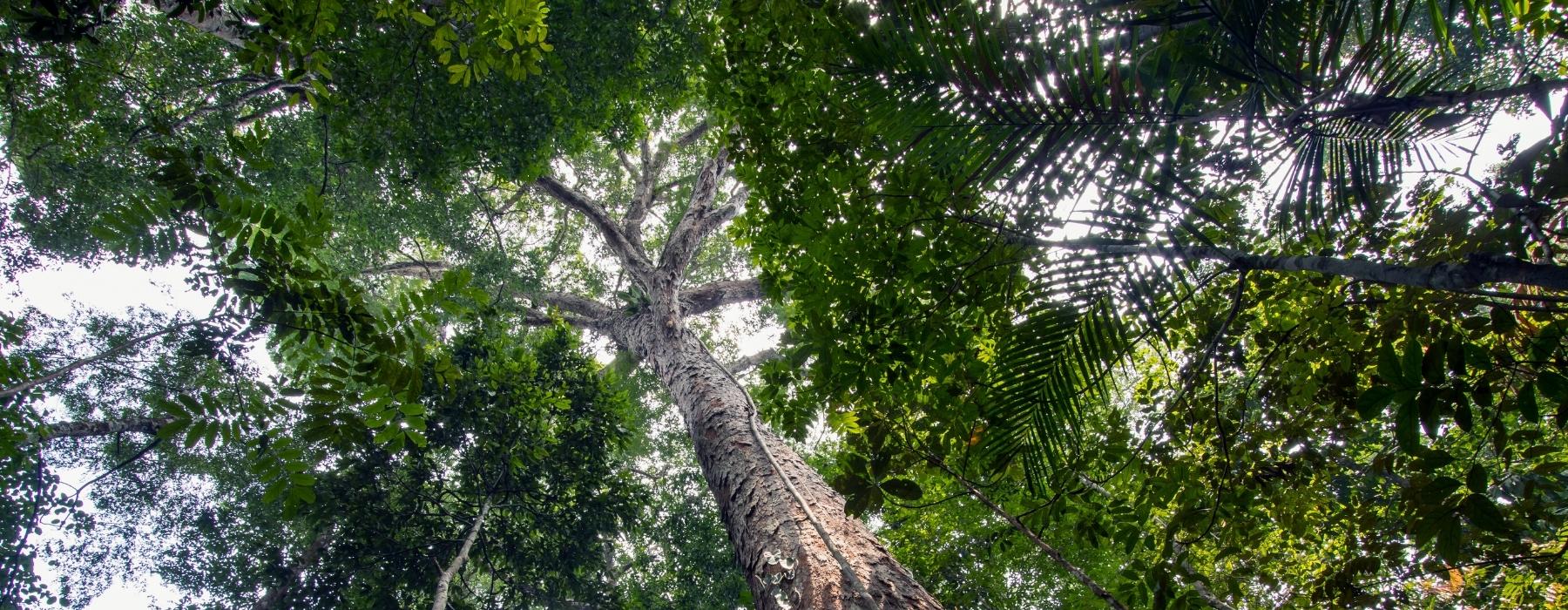
Flora of Manu Jungle, the largest tropical jungle in the world, containing some of the most biodiverse plants species in the world. Located in South America, more than 80,000 species of plants grow in the Amazon jungle. 20% of the world’s natural forest terrain is the Amazon Jungle itself. Scientists regularly discover new and important plant species, many of them hold medicinal properties.
The Amazon rainforest is the largest of all rainforests, covering some 2,336,344 m2; 40 percent of the South American continent. It extends from 5°N to 15°S, mostly in Brazil but also into surrounding areas of Bolivia, Colombia, Ecuador, French Guiana, Guyana, Peru, Suriname, and Venezuela and accounts for about 60 percent of Earth’s remaining tropical rainforest. The land surface is one of plains and low tablelands up to about 1,300 ft asl.
In addition to the great Amazon River, the forest is drained by a multitude of large tributaries, including three other of the world’s 10 largest rivers. A dense network of thousands of smaller streams, lakes, and abandoned meanders carry water through the forest and create an intricate mosaic of habitats and environmental conditions.

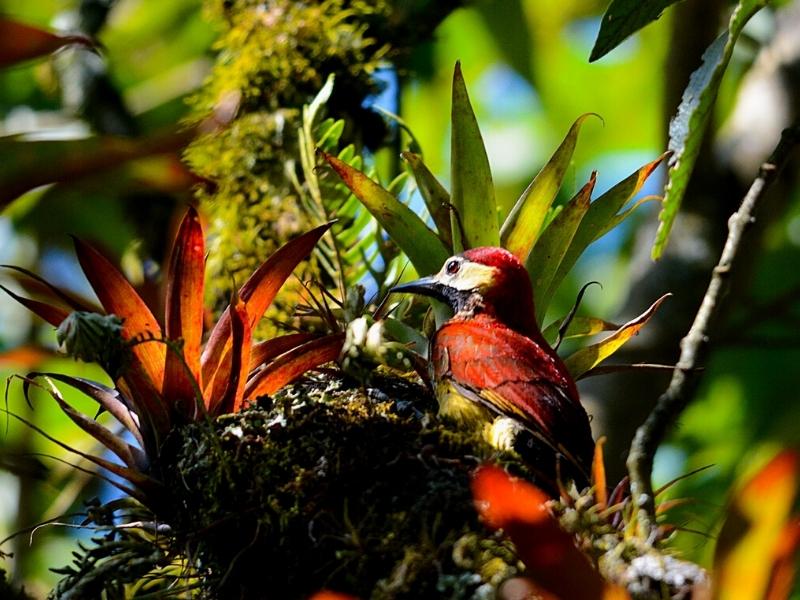
These beautiful plants are bright in color, varying from reds and oranges to blues and purples. These flowers grow on the ground or on other plants, and even on rocks. Like the passion fruit flower, some of the bromeliad species also produce fresh, juicy fruit. Can you guess what it is? Answer: Pineapple.
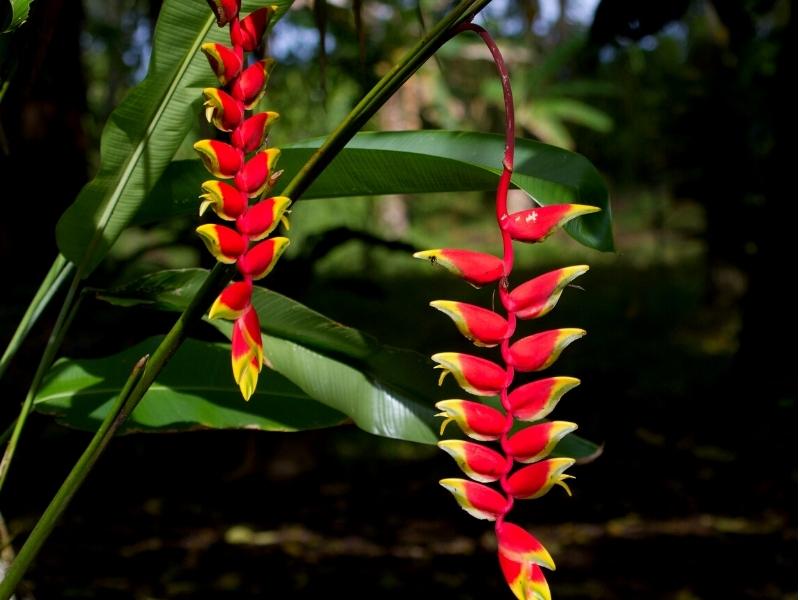
This beautiful Amazonian flora is known as the Hanging Lobster Claw. This flower is bright in color and varies in its shape. Known for their characteristically long structure, heliconia plants range from 0.5 to nearly 4.5 meters (1.5–15 feet) tall depending on the species and their leaves are 15–300 cm (6 in-10 ft) in size. They require warm and humid conditions to grow, thus being prominent in the tropical regions of the world. Hummingbirds rely on Heliconia plants for food and nesting, and they are also the main pollinators of the plant.

Economically, the rubber tree is one of the most important trees in the Amazon rainforest for indigenous peoples. The rubber tree’s sap is latex, and it is still used today in the modern processing of rubber. The rubber tree can reach a height of up to 100 feet (30 m). The inner bark of the tree oozes latex when cut or damaged. It’s quite a unique sight to see. Originally this plant was native to the Amazon rainforest, however, seeds were eventually illegally smuggled to Southeast Asia where the tree successfully propagated.
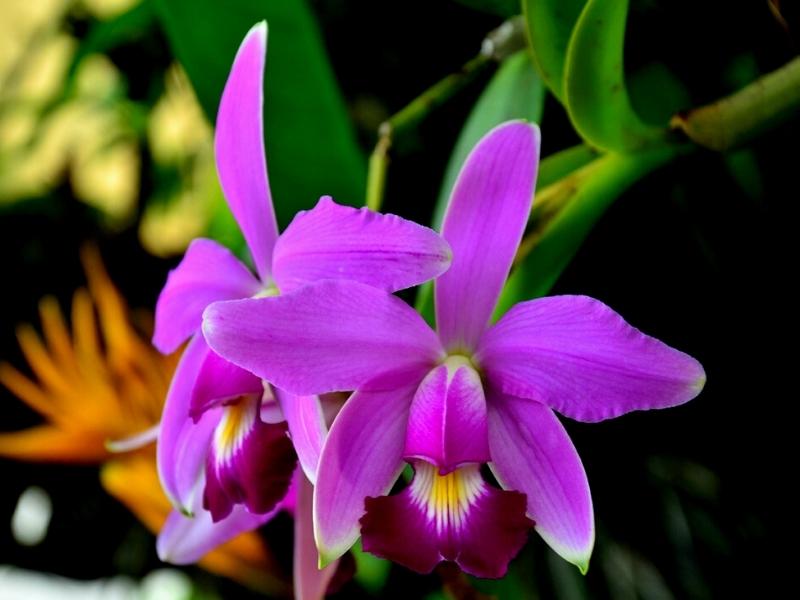
The orchid flower is known as one of nature’s most exquisite flowers. They are also the largest family of flowers in the entire world (about 30,000 different species). Orchids grow in all shapes and sizes, and because of their adaptable nature, they grow in almost all climates around the world, except the cold! Amazon Orchids, like many flowers, depend on insects and birds for pollination. The conservation of the rainforest is vital for their existence.
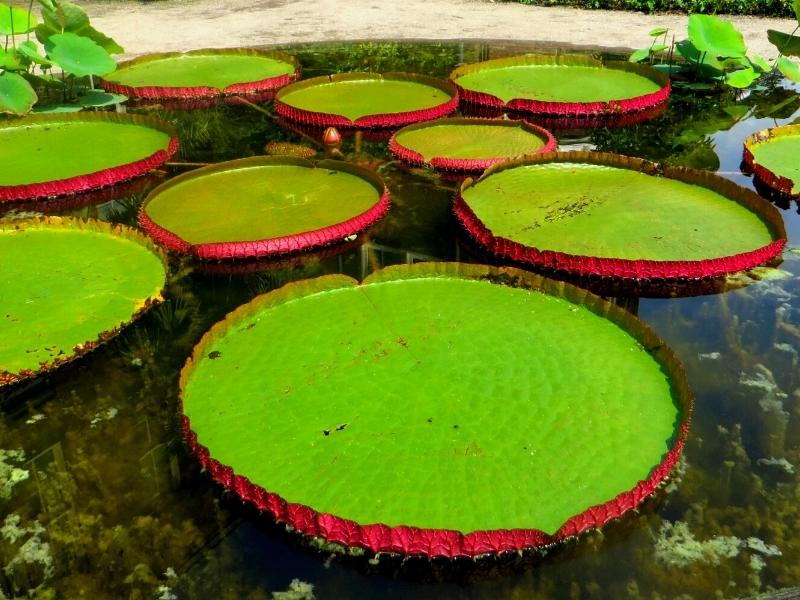
As the world’s largest lily, the giant water lily (Victoria amazonica) is a fantastic plant to find in the slow-moving tributaries of the Amazon River and oxbow lakes. The leaves measure 3 meters (10 ft) across and can support the weight of a small child if the weight is evenly distributed. The stalk is also impressive and reaches down to the riverbed, which can be 8 meters (26 ft) down. The flowers are white when they open and later turn pink. Even the flowers are large at 40 cm (16 in) in diameter.
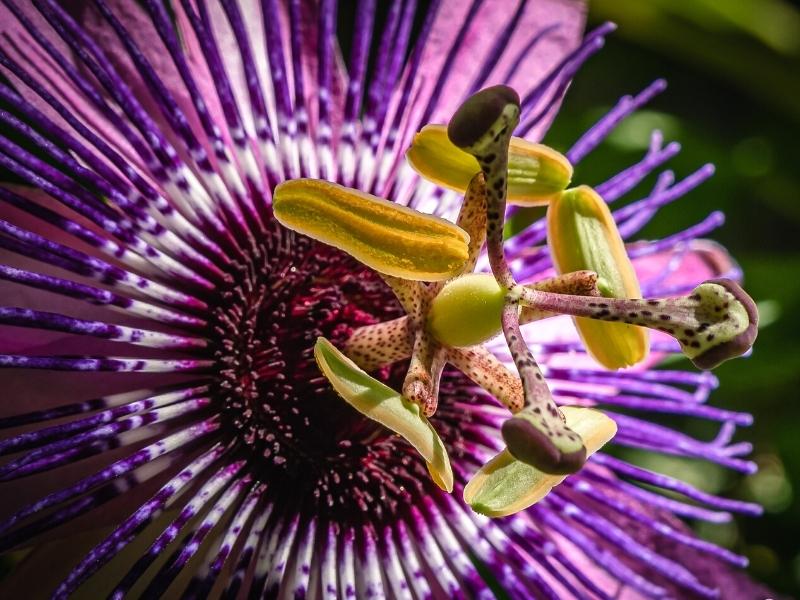
I’m sure many of you have enjoyed a glass of passion fruit juice, but did you know that this plant also produces one of the world’s most beautiful flowers? The passion fruit flower is a vigorous vine that can cling on to almost anything and grow 15 to 20 ft. a year. This plan does well in tropical climates and prefers the sun, however, the passion fruit flower does not like heavy heat. If there is too much heat, the passion fruit flower will start growing towards the shade.

Throughout the thick and fertile Peruvian rainforest, one can find a whole host of plants that have been used throughout history for valuable medicinal purposes. For centuries, throughout Peru and the New World, these plants have been used to create homeopathic remedies developed to cure many maladies. Communities have their own unique recipes and use for the various local medicinal plants, enabling them to treat symptoms, illnesses or injuries in the comfort of their homes.
Homeopathic remedies have been a traditional way of curing ailments in Peru’s history, to a time long before the Incas reigned. Today, descendants of the Incas still practice as curanderos or shamans in communities to treat illnesses, both major and minor, and are regarded with respect for the continuation of these age-old professions.
In total, the amount of ancient methods used in Peru has included more than 1,400 species of medicinal plants. An incredible 900 of them come from the Amazon Rainforest, one of which is used to soothe altitude sickness, the coca plant. This popular homoeopathic remedy contains a complex array of mineral nutrients, essential oils.

The Monkey Brush is a striking vine native to South America. This exotic plant grows like a parasite on other plants and trees throughout the jungle. The flower acts as a natural feeding source for hummingbirds and a resting spot for green iguanas. The flower is very bright, a vivid orange color that can easily be seen among rainforest greenery. The name Monkey Brush is believed to have come from the flower’s long and colorful stamens.

One of the most iconic trees in the Amazon Rainforest, Brazil nuts (Bertholletia excelsa) grow to a fantastic height and have a unique shape. They have a straight trunk and bush-like crown of leaves and branches. These trees grow to 50 meters (160 ft) tall with a trunk 2 meters (6 ft) wide.
As one of the largest trees in Amazonia, the Brazil nuts are fantastic trees to encounter in the rainforest. Their nuts were first described by the explorer and naturalist Alexander von Humboldt in the early 1800s on his voyage down the Amazon River. The fruit pods housing the nuts are extremely hard and can only be cracked by macaws and a type of large rodent called an agouti.
As a fantastic symbol for well managed tourism, the trees will only produce fruit if pollinated by euglossine bees and the bees require the scent of a delicate orchid to attract a mate. The Brazil nuts are therefore intricately linked to the health of surrounding rainforest.

Lianas are climbing woody vines and are a classification of how a plant grows, such as a tree, bush or shrub. There are many plant families that grow as lianas. Although the most diverse type of plant in a tropical rainforest, lianas are often overlooked. These woody vines are what hold up large trees in an expansive and complicated network. This is because tropical rainforests have shallow soil and vines provide the support system. This also means that when large trees fall, the network of vines bring down surrounding trees opening up the canopy for seedlings and the next generation of growth.
Lianas grow to around 200 meters (650 ft) with some growing much longer connecting many trees and plants. The vines start life on the forest floor like most of the rainforest plants and then grow towards sunlight using trees as support. Rainforest communities use a few species for drinking water whereas others are a source of poisons, such as the famous curare.
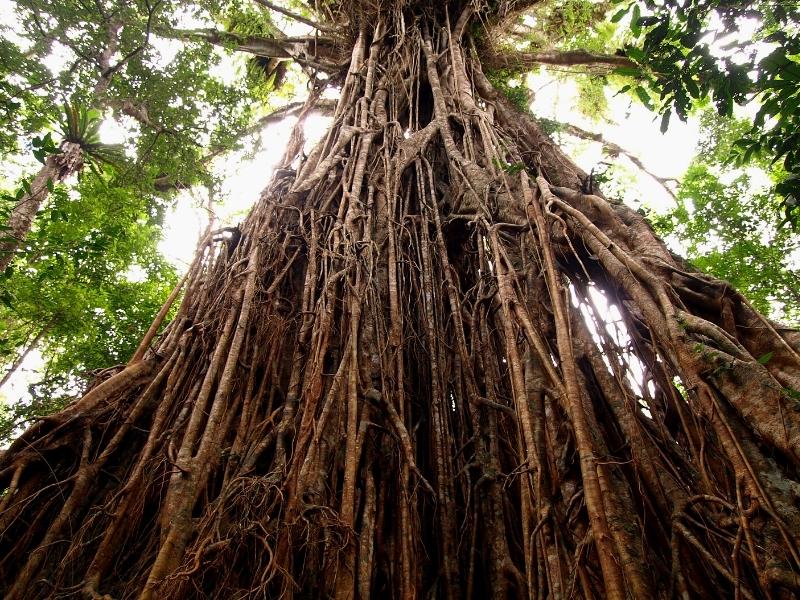
An iconic plant in the Amazon Rainforest, strangler figs (Ficus spp.) have a fascinating and sinister life history. Their towering forms are often pointed out on rainforest walks. Although a giant tree, strangler fig adults start as small seeds deposited on a branch. From here, they grow towards the ground in a seemingly delicate and gentle manner around the tree. It’s only when it reaches the forest floor that the strangler fig swells to engulf its host.
The strangler fig’s roots take the nutrients that previously fed the host often killing the original tree, which leaves behind a case-like form. The lattice trunk provides homes for many rainforest animals and attracts more when the tree fruits to produce figs. They are also a fantastic sight for tourists to imagine this extraordinary life history, which can last for over 200 years.
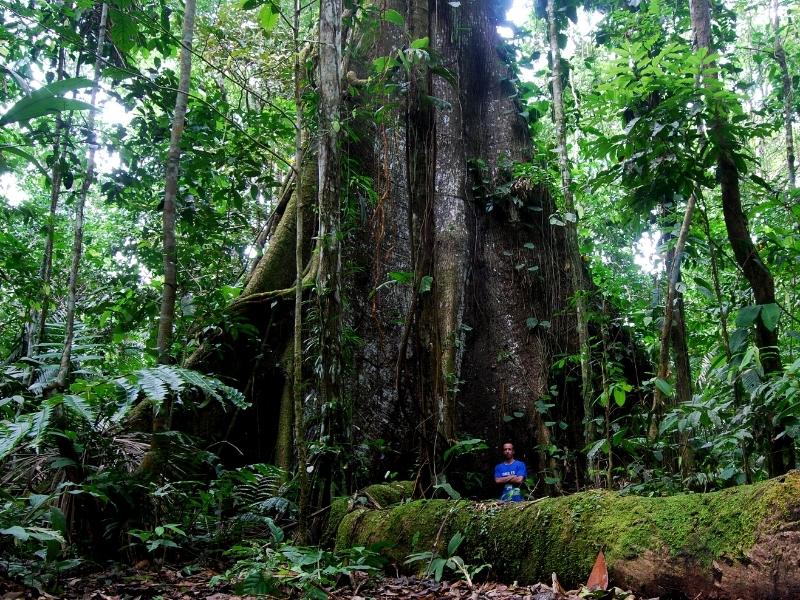
The Kopak tree goes by the name Ceiba and it’s one of the largest trees in the jungle that towers over the rainforest canopy. A diverse number of animal species live in the bark and nooks of this important tree. The kapok tree sheds all of its leaves during the the low-water season, allowing the tree’s seeds to get spread around the jungle. The wood of this tree is very light-weight, making it an ideal base for a river canoe for the locals. The fibre from their seeds, which is used to fill mattresses, pillows, and sleeping bags. This is one of the most common large trees to encounter in the Amazon and is known for its smooth trunk.
Kapoks are common along forest edges and rivers. They drop their leaves in the dry season exposing their white flowers to bats, which along with several other animals pollinate the flowers that open just before dark. They grow to around 50 meters (160 ft) tall.
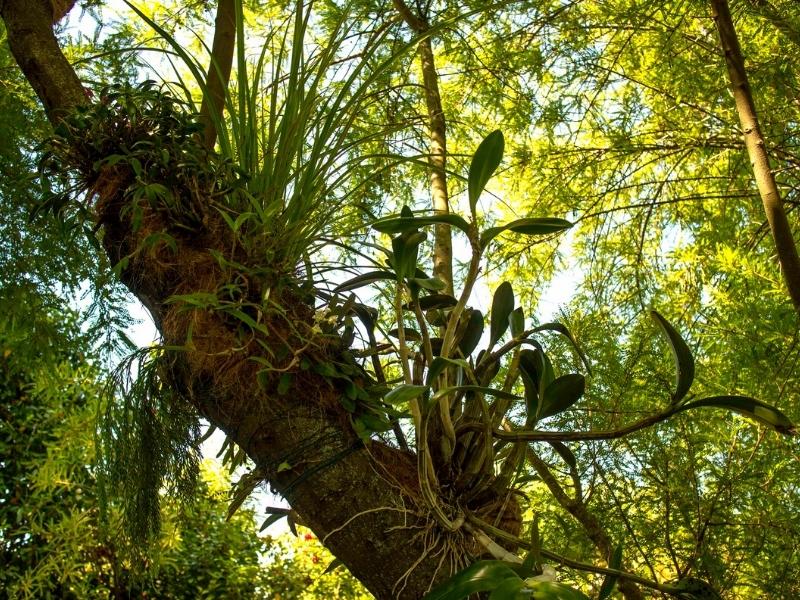
Some plants have evolved to the point that they simply do not need to grow on the forest floor instead, they live on other plants. Such plants are called epiphytes, and in lowland tropical rainforests they may represent up to one-fourth of all plant species.
Epiphytes encompass a wide range of plants: some ferns, orchids, cacti and mosses have the ability to live virtually in mid-air. They trap the little soil they need, which is carried by the wind, and this helps them develop roots and a litter base on tree branches.

The walking palm or cashapona (Socratea exorrhiza) is an interesting plant to find in the rainforest. They are very common in the rainforest and grow to over 25 meters (80 ft) with a very distinctive root system. The stilt-like roots grow out from the stem between 1 to 2 meters (7 ft) off the ground. With the distinctive roots, it’s easy to imagine the myth of the plants walking around the rainforest, which led to the palms’ name. The reason for the unusual roots is still unknown, however, the most likely reason is that it has something to do with quick growth and stability.
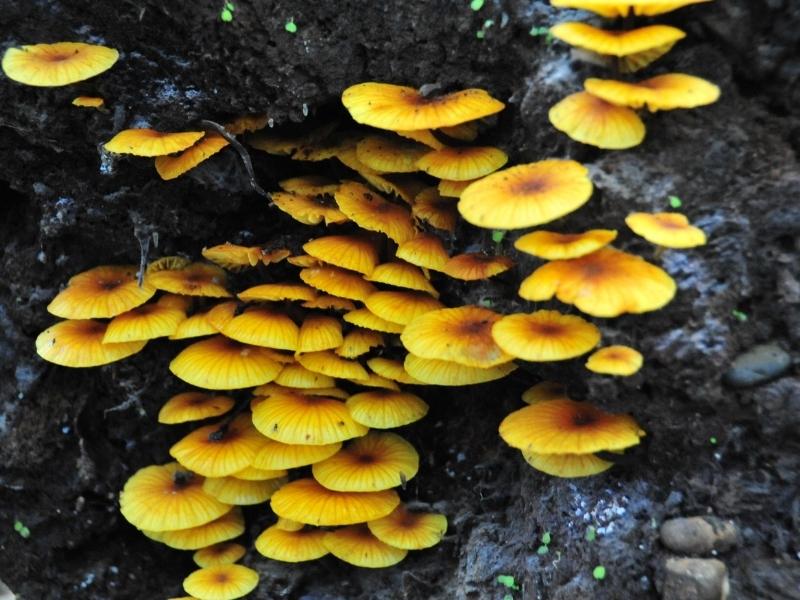
In fact, with so many Peru Amazon rainforest plants and flowers, mushrooms and fungi are more important as decomposers that bacteria. They efficiently take care of tree trunks but they are also cruel predators on live trees and even insects and other critters. On the left a symbiotic fungus that covers the entire bark of a tree, and glows in the night. Another fungus grows in a live tree, while at the right a fungus growing from the body of an ant that it killed.
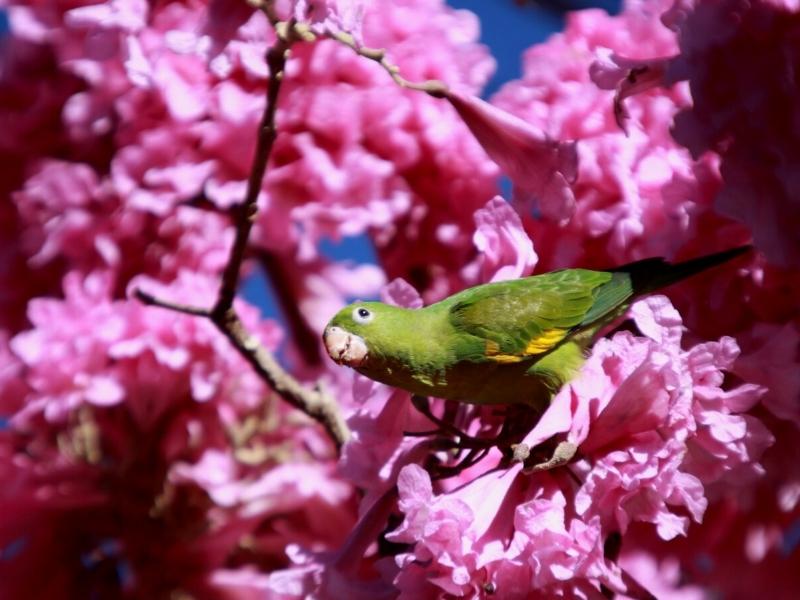
It is a very large tree species that is characterized by pink foliage, which is why it is considered one of the most beautiful bushes in nature, its scientific name is “Tabebuia Avellaneda“, in the world of botany they call it “Handroanthus impetiginosus”, its growth is very slow and when it reaches adulthood it can measure up to 30 meters.
It is also considered a very beautiful large tree, its trunk is straight with irregular dark brown bark, it has equally irregular foliage, its leaves are velvety and contain five parts called leaflets. During spring is when you can appreciate all its beauty, as they display pink flowers, then showing their true meaning and presence in nature.
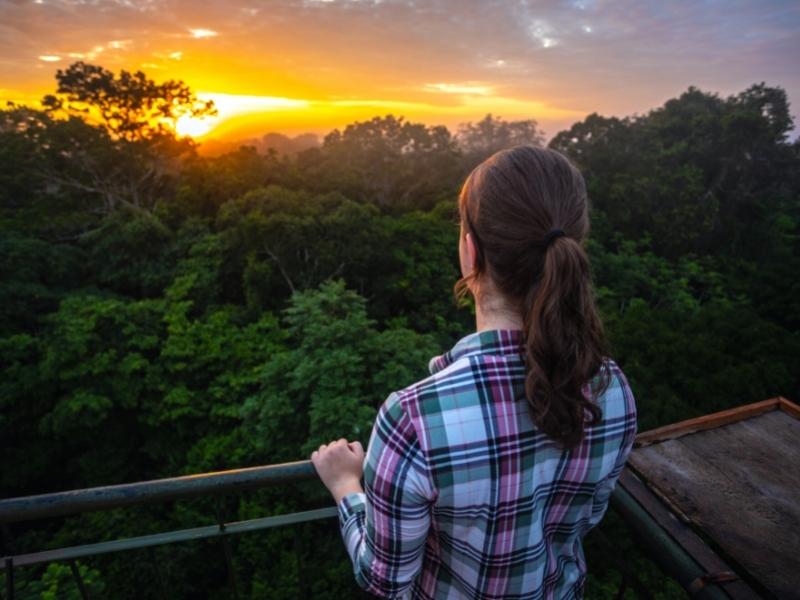
Dive deep into the culture and landscapes of Peru with this adventure to Machu Picchu, the Amazon and more. Search for wildlife along jungle trails and rivers in the rainforest from a comfortable lodge then head up into the Andes to Cusco, the capital of the Inca empire.


Your luxury trip to Peru includes a selection of Andean and Amazonian landscapes. We will help you to explore this welcoming and varied country, planning each step of your trip, with the best services. With the help of amazing expert guides, you can enjoy all that Peru has to offer, every detail is well taken care of.

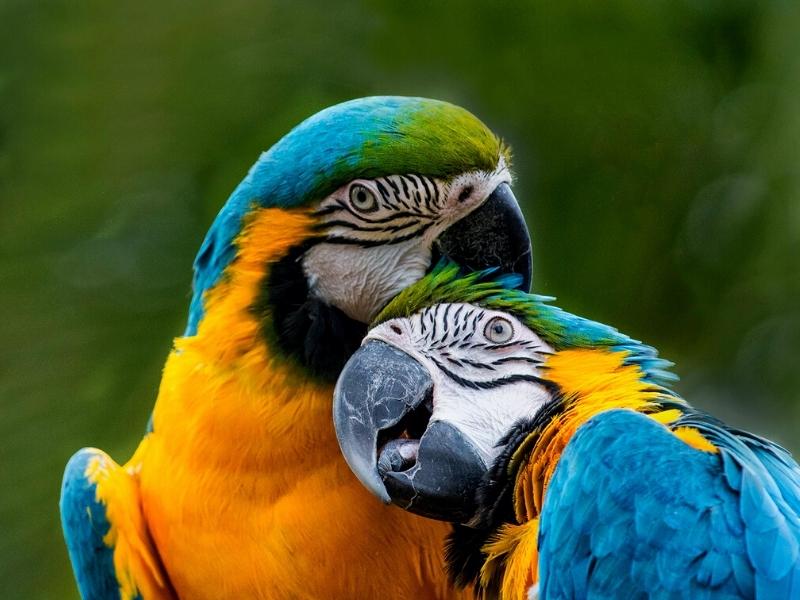
Peru is a country with different cultures and beautiful landscapes. It has one of the best gastronomy in the world. This tour is designed for travelers looking for unique and special moments in their vacations, and families who want to avoid crowds. You will visit the ancient city of Lima, the Amazon forest, the beautiful sacred valley of the Incas, the wonder of Machu Picchu.


Manu National Park is an excellent way to experience an intense amazon wildlife.Is the biggest Amazon rainforest in the Americas, its incomparable natural wealth, host the greatest amount of flora and fauna of the world.

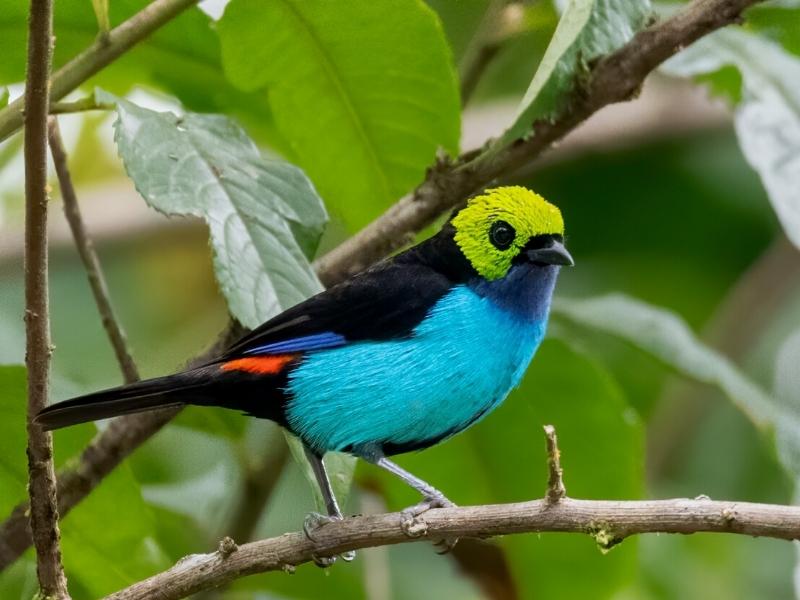
Manu National Park is located in the Amazon rainforest of Peru. This attraction is one of the few places on the planet that still maintains its great biodiversity of birds, mammals, reptiles and many medicinal plants.


Explore Manu National Park 5 days, the amazon’s mystery and Live a fascinating adventure to the vast amazon Manu national park , is one of the best places in South America to see a stunning variety of tropical wildlife.

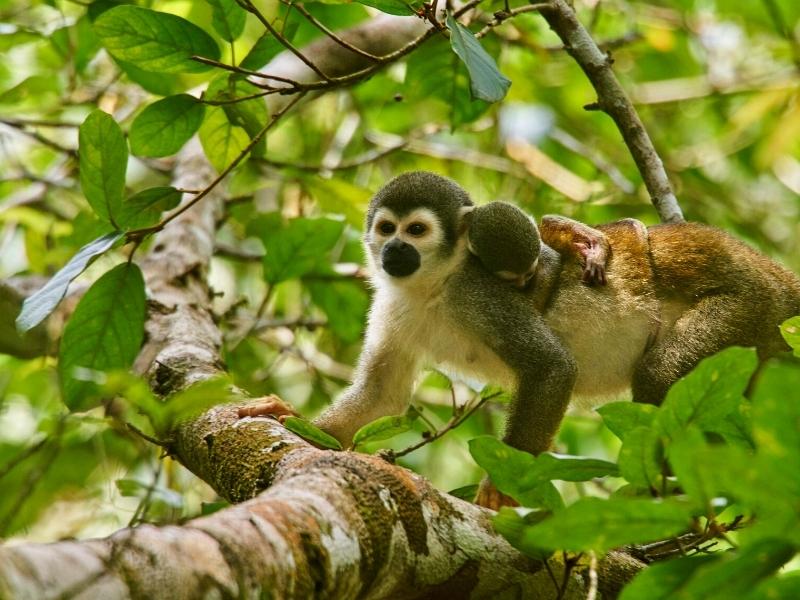
This trip allows you to have one of the best experiences in the Manu National Park which includes the Reserved Zone in only 7 days. It is an ideal way to experience the culture and traditions of local communities and see the distinct species of animals and birds that inhabit here.

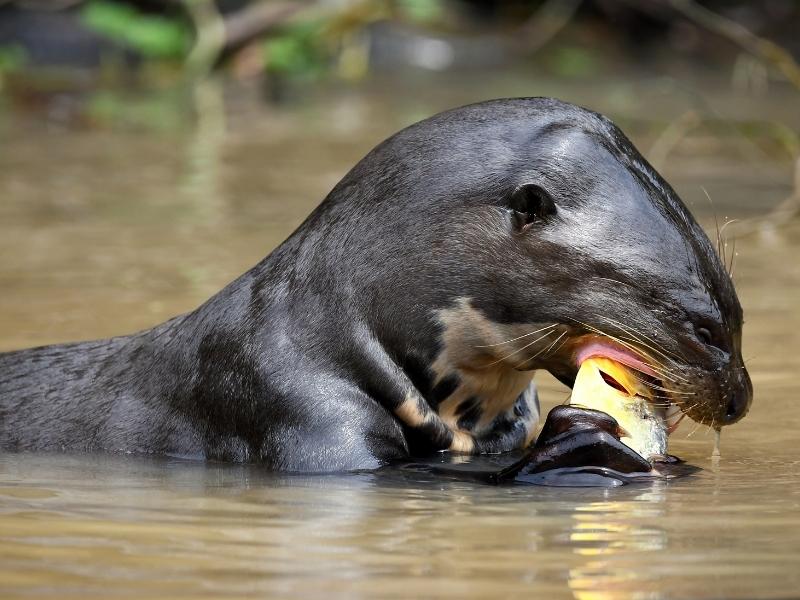
Discover the majestic Amazon rainforest of the Manu National Park. This protected area is in Peru, it is one of the largest ecosystems on the planet, due to its great diversity of birds, insects, plants and mammals.

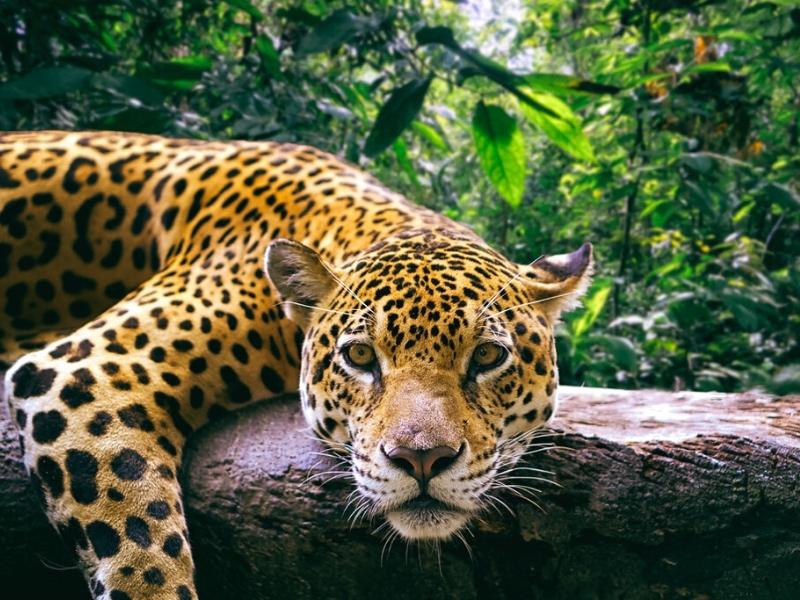
The Manu Jungle tour goes to one of the largest life biosphere reserves in the World. You will enjoy wildlife, traditional villages, with the best specialized guides.
